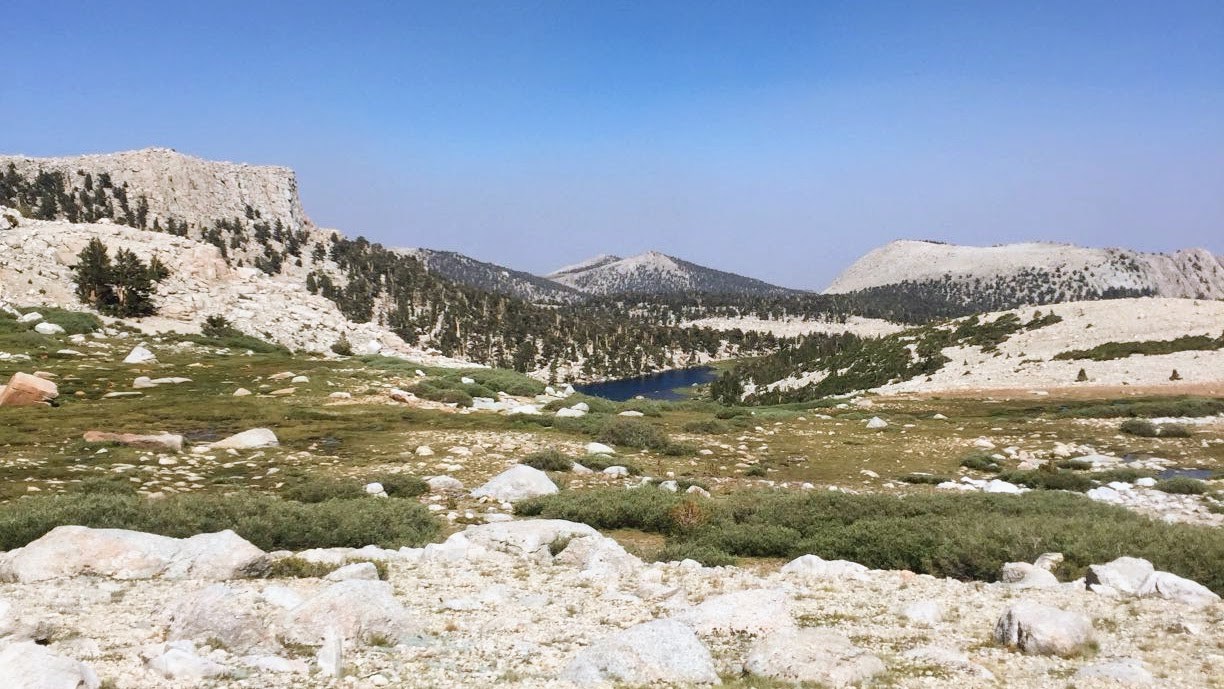You are here
The 45.3-mile journey from Shepherd Pass to Cottonwood Lakes is a challenging, point-to-point route through the stunning landscapes of John Muir Wilderness and Sequoia National Park. Beginning outside of Independence, California, this route rewards hikers with dramatic granite peaks, lush meadows, and pristine high-alpine scenery. The route is demanding but well worth the effort for those ready to take on the adventure.
DESCRIPTION
Start at the Shepherd Pass Trailhead in Owens Valley, where the trail immediately begins a steep ascent, gaining approximately 6,000 feet over 10 miles to reach Shepherd Pass. From here, the trail continues southwest, leading to a junction with the Pacific Crest Trail (PCT) / John Muir Trail (JMT). Turn left onto the PCT, heading south, and follow it for several scenic miles to the Rock Creek junction.
From Rock Creek, follow the Rock Creek Trail to the Upper Rock Creek Trail, eventually connecting to the New Army Pass Trail. Ascend New Army Pass, enjoying the expansive views, and descend eastward to the Cottonwood Lakes Trail. Finish by following the Cottonwood Lakes Trail to the trailhead, completing this rewarding high-elevation trek.
Note: This is a point-to-point hike, so arrange a shuttle to return from Cottonwood Lakes Trailhead.
FLORA AND FAUNA
This route offers a beautiful display of Sierra Nevada flora. In the lower elevations, you’ll pass sagebrush, pinyon pine, and rabbitbrush, which thrive in the dry Owens Valley. As you ascend, the vegetation shifts to alpine forests of lodgepole and whitebark pines, interspersed with lush meadows dotted with wildflowers like lupine, Indian paintbrush, and columbine. At higher elevations, the terrain becomes more sparse, with hardy alpine plants like mountain sorrel and Sierra primrose surviving among the granite boulders.
Wildlife sightings are common along this trail, especially at dawn and dusk. Mule deer, yellow-bellied marmots, and golden-mantled ground squirrels inhabit the area. Black bears are occasionally seen, so proper food storage (such as a bear canister) is required in wilderness areas. Lucky hikers may even spot bighorn sheep or peregrine falcons.
SAFETY AND CONSIDERATIONS
-
Steep Elevation Gain: The initial 10-mile ascent to Shepherd Pass involves a challenging 6,000-foot elevation gain. Be prepared for a strenuous climb and allow time for acclimatization if coming from lower elevations.
-
New Army Pass Conditions: New Army Pass can hold snow well into early summer. Check conditions beforehand, and be cautious if attempting a spring or early summer hike. Trekking poles and microspikes are recommended for snow patches or steep sections.
-
Navigation: While most of the trail is well-marked, a map, compass, or GPS device is advisable. This is especially important on less-trafficked sections like Rock Creek and Upper Rock Creek trails, where the trail may be less defined.
-
Weather: High-altitude weather can change quickly. Bring layers for sudden temperature drops, strong winds, and the possibility of afternoon thunderstorms, especially in summer.
-
Water: Water sources are relatively plentiful, especially along Rock Creek and Cottonwood Lakes. However, always carry a filtration or purification method, as water sources may be sparse on certain segments.
-
Wildlife Precautions: Use a bear canister for food storage, avoid leaving any scented items accessible, and know basic bear safety tips.
PERMITS AND CAMPING
Wilderness permits are required for overnight camping and can be reserved up to six months in advance through www.recreation.gov.
ADDITIONAL INFORMATION
Eastern Sierra Interagency Visitor Center: 1-(760) 876-6200
Wilderness permit information: 1-(760) 873-2483
Shepherds Pass Trail: https://www.fs.usda.gov/recarea/inyo/recarea/?recid=20796






















Comments
Sign In and share them.